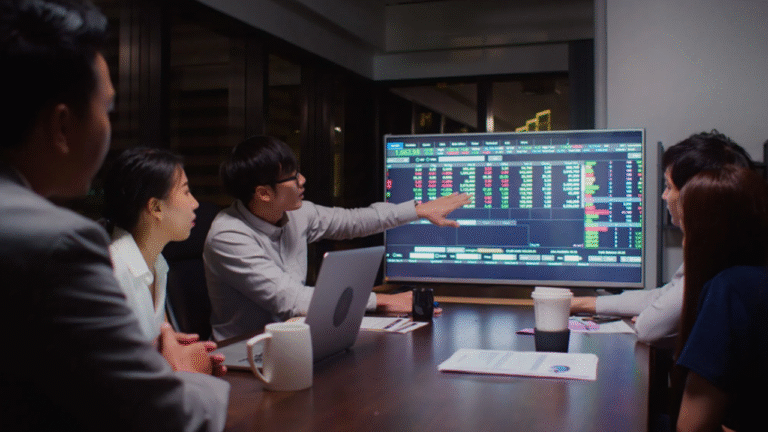In today’s competitive landscape, traditional sales and marketing strategies often struggle to capture attention and sustain engagement. Audiences crave interactive, rewarding, and personalized experiences — and brands that fail to deliver them risk being forgotten.
That’s where gamification in sales and marketing steps in. By applying game design principles to everyday business processes, organizations can make selling, learning, and customer interaction not just effective, but exciting. From point-based loyalty programs to leaderboards, quizzes, and digital challenges, gamification turns routine tasks into meaningful experiences that drive measurable results.
Discover how gamification in sales and marketing is transforming traditional approaches into highly engaging, rewarding, and measurable strategies. With the right game mechanics, businesses can fuel customer engagement, motivate sales teams, and drive long-term customer loyalty.
Common Challenges in Sales & Marketing
Traditional marketing campaigns and sales strategies often fail to capture attention, leading to low user engagement and uninspired sales reps. Without interactive approaches, companies struggle to:
- Maintain brand awareness in crowded markets.
- Improve customer experience consistently.
- Keep sales performance on track with ambitious sales goals and sales targets.
- Drive active participation in loyalty programs.
How Gamification Solves These Challenges
Gamification uses game design elements like points and badges, challenges, and achievement badges to turn ordinary activities into exciting ones. For example:
- Reward systems with virtual coins or a points system keep users motivated.
- Sales contests create healthy competition among sales reps.
- Interactive quizzes help reinforce product knowledge.
- Real-time performance metrics and KPI increase provide visibility into sales strategies and pipeline activities.
By focusing on game attributes, organizations create a gameful experience where motivation is tied to progress. This ensures every interaction, from mobile apps to digital sales channels, is designed for measurable engagement and stronger consumer engagement.
Gamification in Action: Real-World Examples
- Sales Gamification for Training
Sales training has evolved with gamification. Sales teams now use role-play simulations in Storyline to practice objection handling. This approach not only boosts sales performance but also enhances employee engagement by making training interactive. - LMS-Integrated Quizzes & Missions
By embedding interactive quizzes in LMS-integrated CRM systems, businesses ensure that every sales rep stays sharp. Missions designed around product launches make learning engaging and measurable. - Leaderboards & Competitions
Sales contests with real-time leaderboards drive friendly rivalry. Teams are motivated to hit sales goals, track their progress with performance metrics, and push themselves to outperform peers. - Customer-Facing Campaigns
Gamification isn’t just for sales reps. Brands use social media challenges and mobile apps to engage customers directly. For instance, Starbucks Reward gamifies coffee purchases, while McDonald’s Monopoly is one of the most famous gamified loyalty programs ever designed. Modern campaigns also feature spin-to-win widgets, virtual treasure hunts, and virtual goods to maintain brand engagement.
Immersive Experiences with Technology
Companies are leveraging augmented reality , virtual reality, and augmented location games for product demos and interactive campaigns. These immersive approaches create memorable customer experiences, drive stronger brand engagement, and improve customer relations.
Core Drives Behind Gamification
Gamification isn’t just about adding fun elements — it’s about understanding what motivates people to take action.
When applied to sales and marketing, it taps into three powerful psychological triggers:
- Achievement and Recognition: People are driven by progress. Reward systems, badges, and performance dashboards give a sense of accomplishment that fuels consistent participation.
- Competition and Collaboration: Leaderboards and team challenges spark healthy competition while strengthening collaboration across sales teams and customer communities.
- Engagement and Feedback: Interactive elements like quizzes, instant feedback loops, and milestone tracking keep users informed, motivated, and emotionally invested in their journey.
By combining these behavioral motivators with the right game design mechanics, businesses create meaningful experiences that enhance motivation, improve performance, and strengthen both employee and customer engagement.
Key Benefits of Gamification for Sales
The benefits of gamification in sales go far beyond motivation — they reshape how teams learn, perform, and connect with customers. When implemented effectively, sales gamification strategies can transform ordinary selling activities into engaging experiences that boost productivity, accountability, and brand loyalty. From training and onboarding to customer retention, gamified programs help businesses improve sales performance, enhance collaboration, and sustain long-term engagement.
Here’s how gamification creates measurable impact in sales environments:
- Increases customer engagement: Campaigns feel like fun activities rather than hard sells.
- Boosts employee engagement: Sales reps feel motivated with achievement badges and recognition.
- Improves communication skills: Through practice-based sales strategies like role-play.
- Enhances customer loyalty: Gamified loyalty programs such as Starbucks Reward increase repeat purchases.
- Drives team motivation: Sales contests and leaderboards encourage consistent performance.
- Strengthens customer service and relations: Gamified support tools improve customer service efficiency and customer relations quality.
Expands brand value: Encouraging brand value co-creation with active customers increases loyalty and market reach.
Expanding Gamification Beyond Sales Teams
While sales teams often see the most direct impact, gamification in marketing is becoming just as powerful. Modern marketers use game mechanics to make campaigns more interactive, memorable, and data-driven. By turning digital touchpoints into playful experiences, businesses can boost customer engagement, build brand loyalty, and track measurable marketing performance.
From personalized challenges to interactive storytelling, marketing gamification examples show how brands are reinventing audience engagement across every digital platform.
Here’s how forward-thinking brands are using gamification in marketing today:
- Personalized customer journeys powered by AI: Interactive challenges, points, and rewards dynamically adapt to each user’s behavior — increasing click-through and conversion rates.
- Gamified social engagement campaigns: Hashtag challenges, leaderboard-based contests, and referral games drive viral reach across Instagram and LinkedIn.
- Loyalty programs that feel like games: Tier-based progress bars, digital badges, and “unlockable” perks encourage repeat engagement and long-term brand affinity.
- Data-Driven Campaign Insights: Gamified dashboards visualize engagement metrics, helping marketers refine strategies based on real-time performance.
By integrating AI-powered analytics, conversational AI, and technology acceptance models, organizations design more effective gamification strategies that lead to higher adoption rates.
What’s Next for Gamification in Sales & Marketing?
The future of Sales Gamification lies in personalization, immersive tech, and deeper analytics. As more organizations adopt game design and game mechanics, we can expect:
- Smarter performance metrics and KPI increases that tie gamification to ROI and market share growth.
- Greater use of augmented reality, virtual reality, and augmented location games in product launches.
- Broader adoption of interactive quizzes, spin-to-win widgets, and virtual treasure hunts for both training and customer education.
- Stronger integration with digital marketing to boost brand engagement and foster brand advocates.
Final Thoughts
Gamification in sales and marketing is more than just a trend—it’s a proven strategy. By using game design elements, fostering social interaction, and rewarding behaviors through loyalty programs, businesses can boost sales performance, enhance user experience, and create lasting customer loyalty.
When combined with gameful experiences, psychological core drives, and advanced tools like AI-powered analytics, gamification becomes a force that reshapes digital experiences, improves customer service, and accelerates market share growth.
If your goal is to motivate your sales teams, strengthen customer engagement, and transform your digital marketing efforts, gamification offers the winning playbook.



